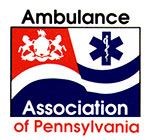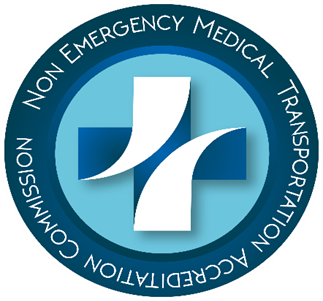EMS & the Social Determinants of Health: Documentation & Billing
In the course of a year, I read tons of patient care reports. I see documentation that describes horrific living conditions, social problems, homelessness, sexual abuse, hunger, poverty, drug and alcohol use, angst and grief related to loss, adult or elder abuse, social isolation and people who cannot access needed healthcare services because they have no transportation. I’ve just presented a fraction of the difficult problems EMS faces daily. These problems drain resources and wear on providers potentially contributing to their own mental health issues. Additionally, they are often the reasons behind the need for community paramedicine services or why EMS sees so many “frequent flyers.”
There is an umbrella name for all these problems – the Social Determinants of Health (“SDOH”). Healthcare providers of all kinds have learned that clinical care may not solve the patient’s problem if the heart of the issue is environmental or social. A diabetic who is understands the disease, has a good home and the means to afford insulin is more likely to be compliant than a patient with unstable housing, a low-paying job and lousy eating habits. SDOH are everywhere as healthcare providers and payers try to assess the best approach to giving care and managing costs. It is a fact – SDOH influence patient outcomes as well as cost.
EMS Documentation and SDOH
As often as I read the real-life descriptions of SDOH in trip reports, I have not seen routine publication of how these problems are being quantified in our industry. EMS providers SEE these problems and they DOCUMENT them, but we are not capturing that valuable data…. nor are we billing based on SDOH factors.
Partially that’s an educational problem. We have not taught field providers to note SDOH issues (even though they often already do so because these are the problems they see). Currently much documentation is focused on capturing important data for NEMSIS. The critical information gathered by NEMSIS already informs and drives much of what is done in EMS to help provide quality patient care.
However, we don’t track SDOH in our documentation software. PCR software continues to evolve into data-rich and data-mineable products. The data evolution in EMS has grown to encompass information sharing with other types of care providers. Yet, the SDOH data elements seen in the world of the EMS provider have not yet been baked into the average PCR for capture.
Then there’s the problem of billing for SDOH. Currently, there are ICD-10 “Z” codes that describe SDOH. They do not paint the total picture of a patient’s risk, but they are descriptive. For example, a biller reading the trip report about the elderly patient whose family caregiver had mishandled the patient for the third time would find that Z91.41, Personal history of adult abuse would be descriptive. Of course, the “Z” code would not be used in the first position on a claim form, but it could lend further support to why the patient needed ambulance transport.
An April 2019 article in Healthcare Dive, “United Healthcare, AMA Team Up on Billing Codes for Social Determinants,” discussed the need for better utilization of ICD-10 codes that can be used to address the social determinants of health so that patients can get connected to needed resources. As noted in the article:
“A study published in December (2018) found that one in every five patients struggles with a high-risk health problem related to their socioeconomic status. More than half suffer from a moderate- to high-risk issue. Medicare and Medicaid beneficiaries made up 40% of those with socioeconomic issues, and they had the most complex problems.”
United Healthcare and the AMA have worked to identify 23 ICD-10 codes that will help identify and address SDOH. They propose using these codes for claims beginning October 1, 2020. (Until now, the 11 ICD-10 codes for SDOH are scarcely being used anywhere in healthcare billing).
What Can We Do?
If one of the biggest payers in the country and the AMA are looking to better track and respond to SDOH, then healthcare providers are going to tune in. EMS also has an important role to play in helping to render quality service and reduce risk to patients, communities, and ourselves. One avenue to address this could be to quantify SDOH encounters and factors in documentation software. Crews are already documenting the issues, but they currently do it in free-form style. I know it’s a big wish, but I hope that PCR software moves to better capture the critical SDOH elements.
If SDOH can be documented, field providers need education to routinely note the SDOH problems they encounter. Again, crews already see it. Let’s help them memorialize what they see. Documentation of SDOH may provide information on how the industry can better respond to our own people and the stress they face.
Capturing data will also help in community paramedicine efforts. We continue to share data with hospitals, home health, hospice, social workers, and other providers … so, why not incorporate it into a complete community paramedicine or mobile integrated healthcare environment? Through involving other caregivers with addressing the SDOH, EMS providers will see how the sharing of information can lead to better resource utilization for their patients.
Even beyond the traditional scope of 911-based EMS care, identifying and addressing SDOH is not only (or always) related to emergencies. Info on inaccessibility to care can help in efforts to provide better non-emergency medical transport (NEMT) options, such as scheduled pick-ups for medical appointments.
We can do better. We must start somewhere.
Capturing and billing on the SDOH is something we should continue to discuss … and providing accessibility to care for individuals is something that we should continue to strive to solve.
To demonstrate how much I see these issues, below are examples of coding from the United Healthcare 6/2019: 2019 Social Determinants of Health ICD-10 Codes list. I highlighted in bold those SDOH issues that I frequently see documented in trip reports.
Homelessness/Other Housing Concerns
Z59.0 Homelessness
Z59.1 Inadequate housing
Z59.2 Discord with neighbors, lodgers and landlord
Z59.8 Other problems related to housing and economic circumstances
Z60.2 Problems related to living alone
Inadequate Material Resources
Z59.4 Lack of adequate food and safe drinking water
Z59.5 Extreme poverty
Z59.6 Low income
Z59.7 Insufficient social insurance and welfare support
Z59.8 Other problems related to housing and economic circumstances
Z59.9 Problems related to housing and economic circumstances, unspecified
Z75.3 Unavailability and inaccessibility of health care facilities
Z75.4 Unavailability and inaccessibility of other helping agencies
Other Social Factors
Z60.4 Social exclusion and rejection
Z60.8 Other problems related to social environment
Z60.9 Problems related to social environment, unspecified
Z71.3 Dietary counseling and surveillance
Z71.6 Tobacco abuse counseling
Z71.82 Exercise counseling
Z71.89 Other specified counseling
Z71.9 Counseling, unspecified
Z72.0 Tobacco use
Z72.4 Inappropriate diet and eating habits
Z91.82 Personal history of military deployment
Parent/Child/Family
Z62.810 Personal history of physical and sexual abuse in childhood
Z62.820 Parent-biological child conflict
Z63.4 Disappearance and death of family member
Z63.8 Other specified problems related to primary support Group
Capturing and billing on the SDOH is something we should continue to discuss. Let me know if I can help!
There are many variations of passages of Lorem Ipsum available, but the majority have suffered alteration in some form, by injected humour, or randomised words which don’t look even slightly believable.
To take a trivial example, which of us ever undertakes laborious physical exercise, except to obtain some advantage from it? But who has any right to find fault with a man who chooses to enjoy a pleasure that has no annoying consequences, or one who avoids a pain that produces no resultant pleasure
About the Author
Maggie Adams is the president of EMS Financial Services, with over 25 years’ experience as a business owner and reimbursement and compliance consultant. Known for a practical approach and winning presentation style, Maggie has worked with medical transportation providers and billing companies of all kinds to provide auditing services, assess their billing for best practices and support their billing and documentation training efforts.




